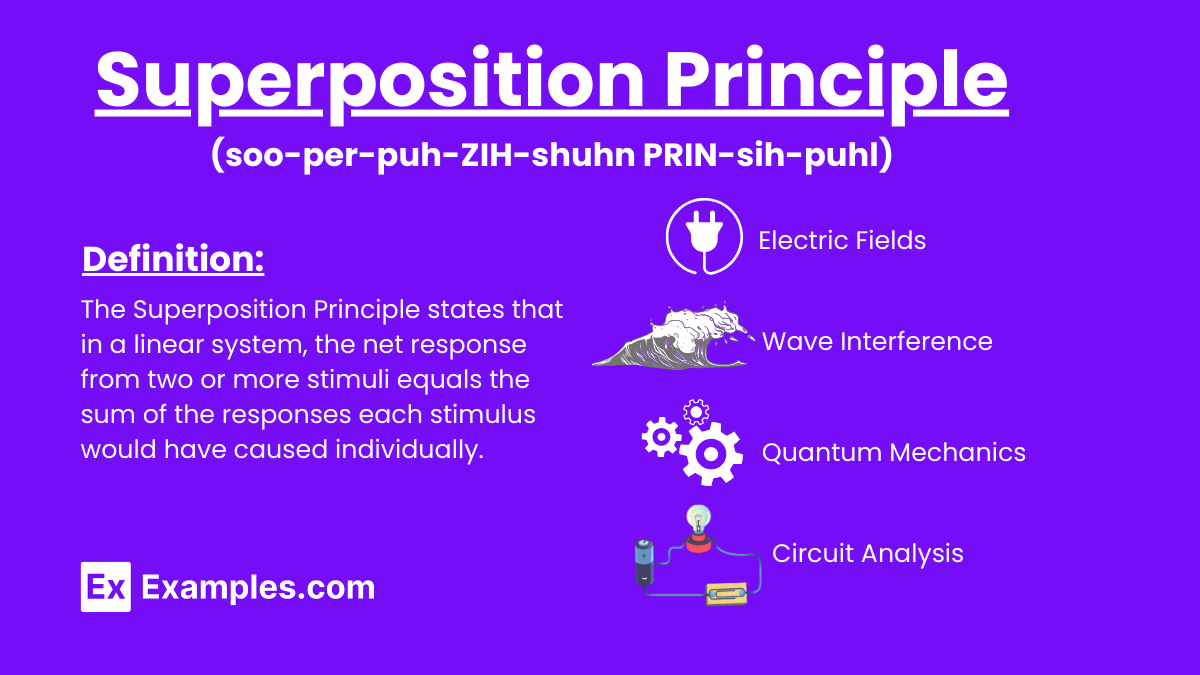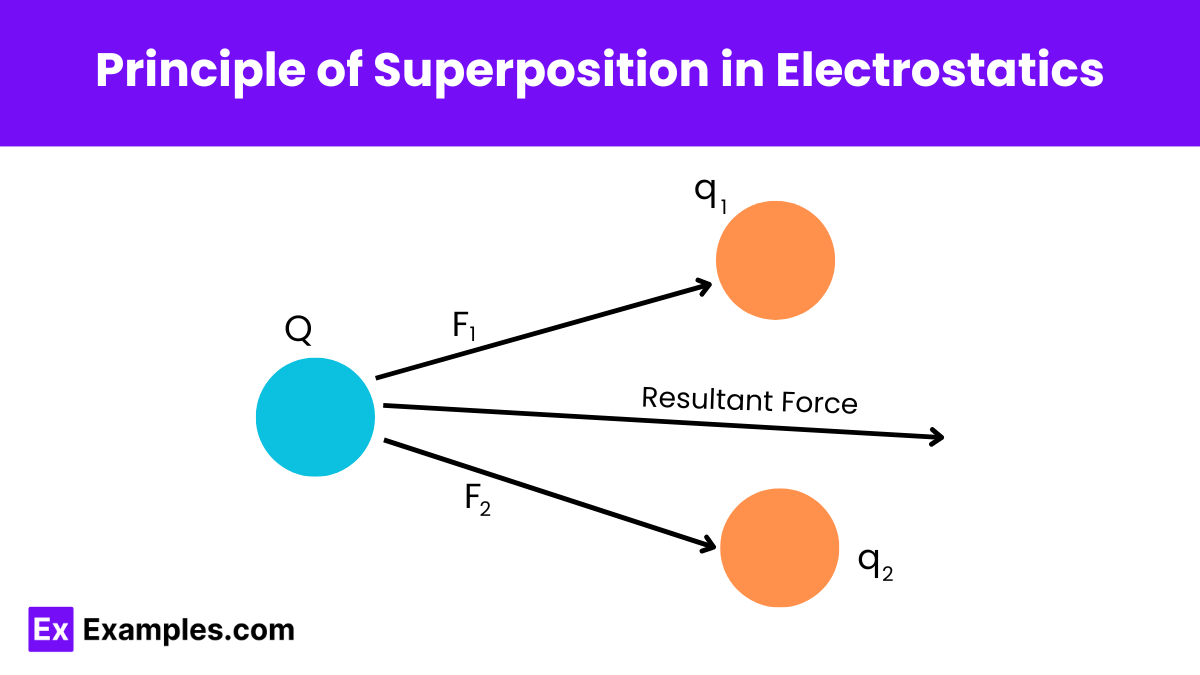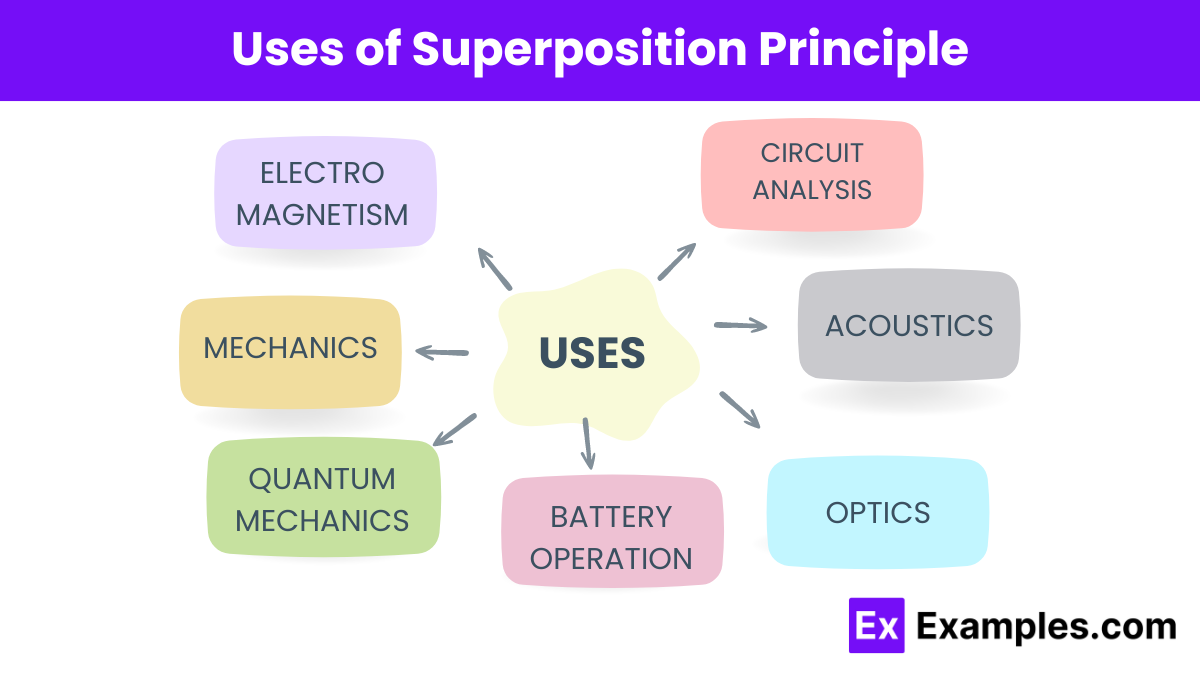What does the superposition principle state in the context of waves?
Waves travel faster in a vacuum
The total displacement is the sum of individual displacements
Waves lose energy over distance
Waves reflect off surfaces at the same angle


The Superposition Principle is a fundamental concept in physics stating that, in a linear system, the net response caused by two or more stimuli is the sum of the responses that would have been caused by each stimulus individually. This principle applies across various domains of physics, including mechanics, electromagnetism, and Laws of quantum mechanics.
The Superposition Principle states that in a linear system, the net response from two or more stimuli equals the sum of the responses each stimulus would have caused individually. This principle applies to various fields, including mechanics, electromagnetism, and quantum mechanics.
For a system where 𝑦 is the response and 𝑥₁,𝑥₂,…,𝑥ₙ are the individual stimuli, the superposition principle can be expressed as:
The superposition principle is particularly useful when dealing with numerous charges in a system. Let’s examine the following scenario:

For simplicity, consider one positive charge 𝑄 and two negative charges 𝑞₁ and 𝑞₂ exerting forces on it. According to the superposition theorem, the resultant force on 𝑄 is the vector sum of all individual forces. Therefore, the force 𝐹𝑟 can be expressed as:

Where,

The principle is fundamental in physics and was formalized by many scientists, notably in wave theory and quantum mechanics.
In signal processing, superposition allows the combination and analysis of multiple signals.
The net force acting on an object is the vector sum of all individual forces applied.
Yes, quantum superposition states that particles can exist in multiple states simultaneously until measured.
Superposition allows the general solution of linear differential equations to be the sum of particular solutions.
Superposition holds true in linear systems where responses are directly proportional to inputs.
Yes, mechanical systems like vibrate strings and membranes exhibit superposition when multiple forces act simultaneously.
Superposition creates interference patterns, with constructive interference amplifying and destructive interfere reducing wave amplitudes.
Yes, in electrostatics, the net electric field is the vector sum of the individual fields produced by each charge.
In waves, the superposition principle means the resultant wave amplitude is the sum of the individual wave amplitudes.
Text prompt
Add Tone
10 Examples of Public speaking
20 Examples of Gas lighting
What does the superposition principle state in the context of waves?
Waves travel faster in a vacuum
The total displacement is the sum of individual displacements
Waves lose energy over distance
Waves reflect off surfaces at the same angle
Which of the following phenomena can be explained by the superposition principle?
Reflection
Diffraction
Interference
Refraction
What happens to the resultant wave when two waves of equal amplitude and phase interfere constructively?
The amplitude doubles
The amplitude becomes zero
The amplitude is halved
The wavelength doubles
How is destructive interference described by the superposition principle?
The amplitudes of the waves subtract
The wavelengths of the waves add
The frequencies of the waves subtract
The speeds of the waves add
If two waves with amplitudes of 3 units and 4 units interfere constructively, what is the resultant amplitude?
1 unit
7 unit
12 unit
0 units
What type of wave interaction is described by the superposition principle?
Absorption
Transmission
Overlapping
Reflection
Which of the following is not an example of the superposition principle?
Noise-canceling headphones
Formation of standing waves
Echo formation
Beats in sound waves
In the superposition principle, what is the term for the point where two waves perfectly cancel each other out?
Node
Antinode
Crest
Trough
How does the superposition principle apply to electric fields?
The electric fields from multiple sources subtract
The electric fields from multiple sources add vectorially
The electric fields from multiple sources cancel out
The electric fields from multiple sources multiply
What is the result when two waves of equal amplitude and opposite phase interfere?
Constructive interference
Destructive interference
No interference
Amplification
Before you leave, take our quick quiz to enhance your learning!

